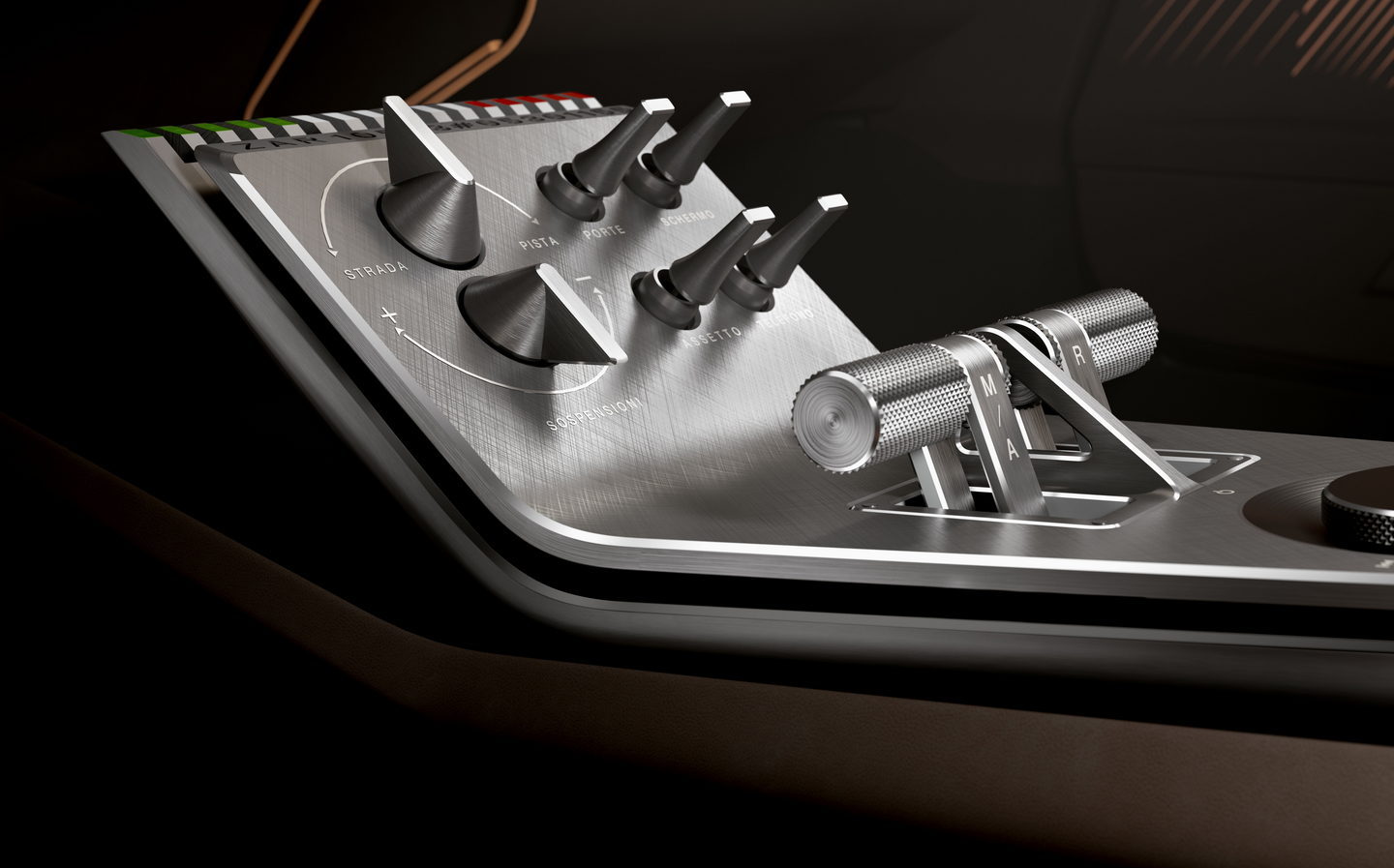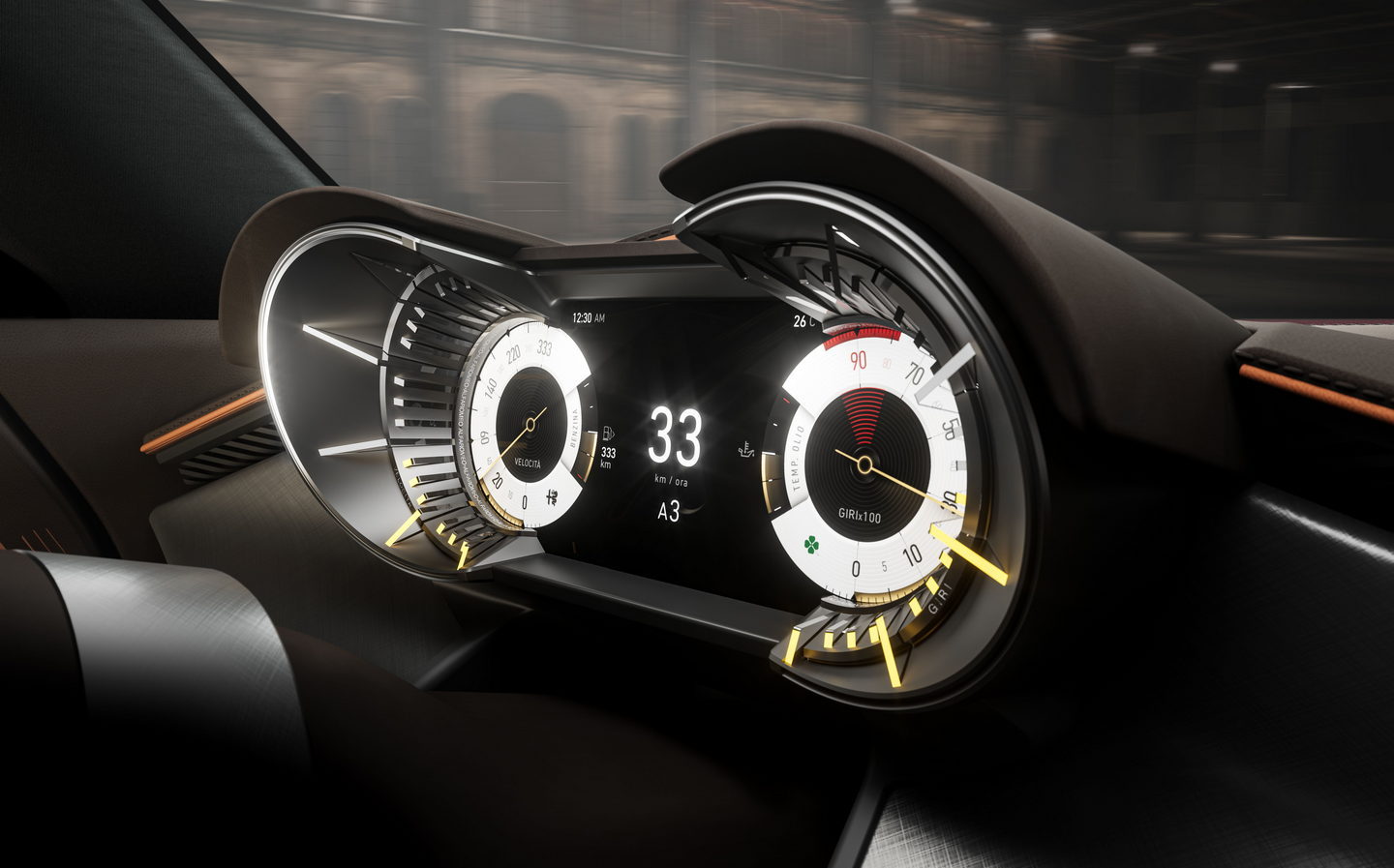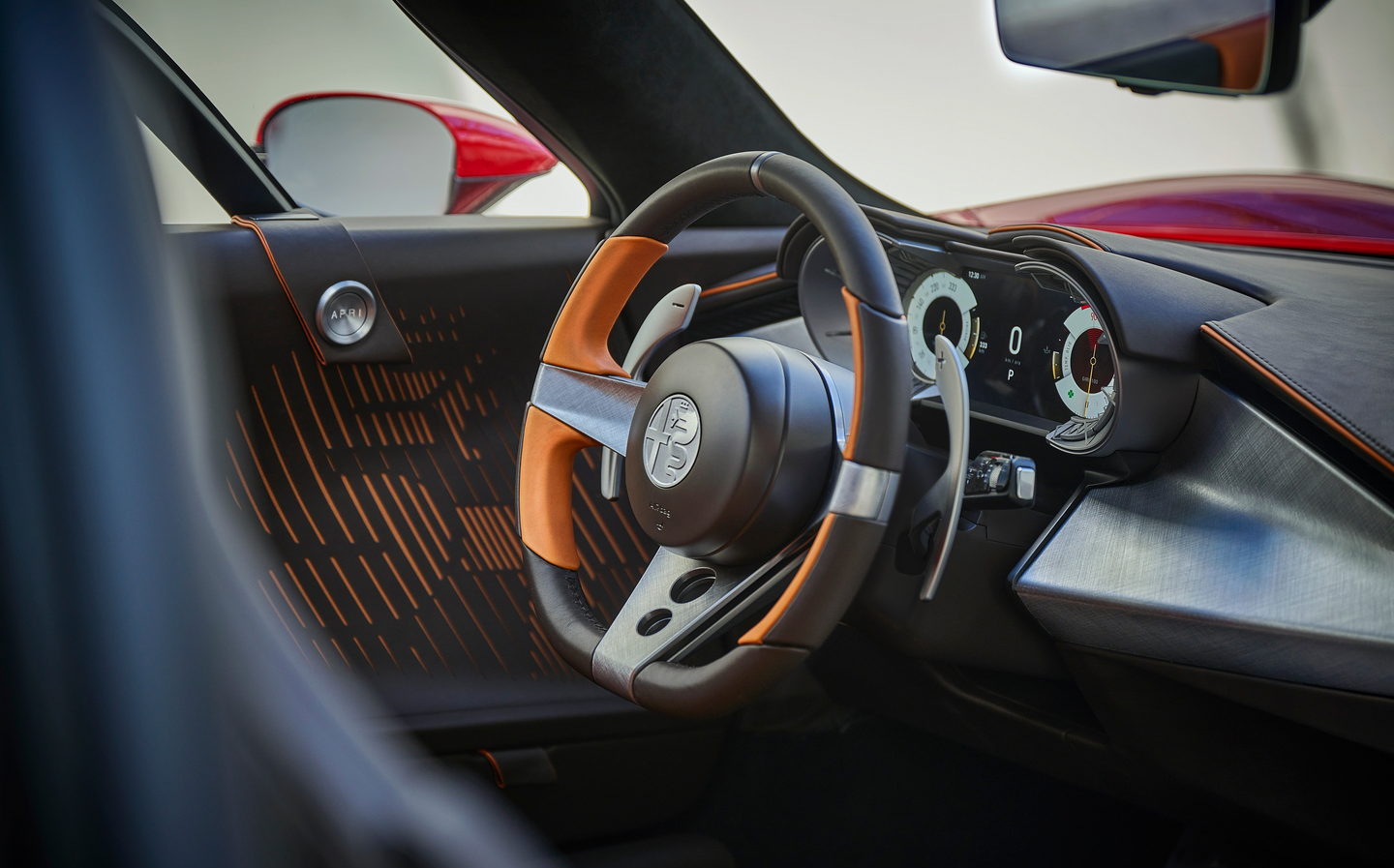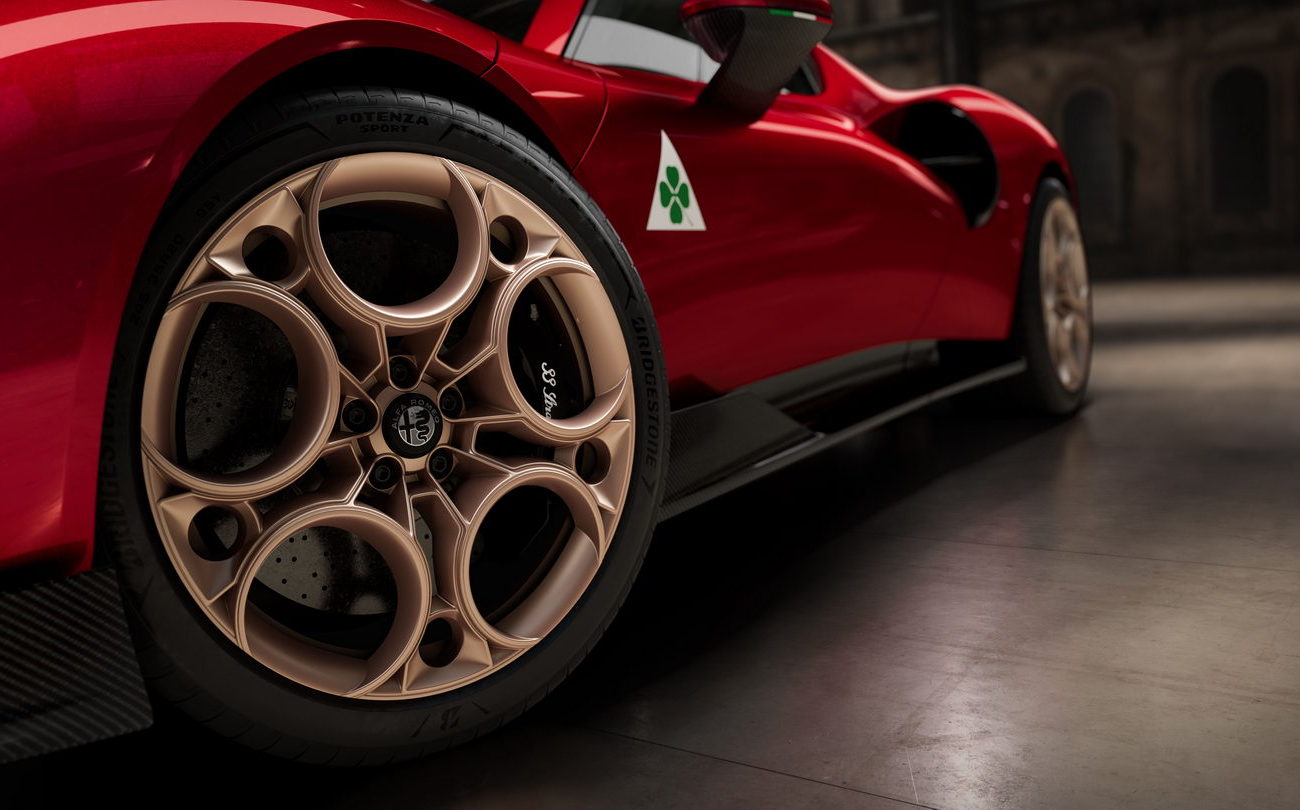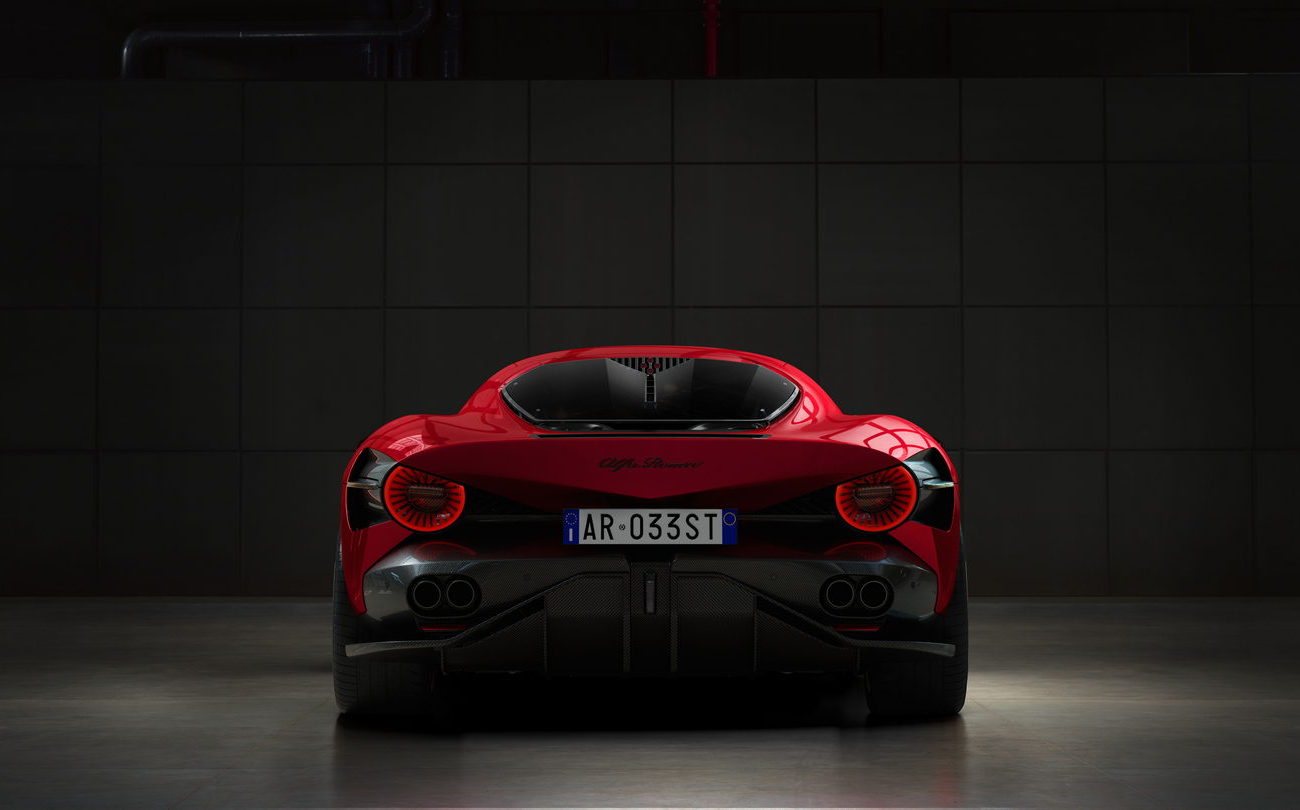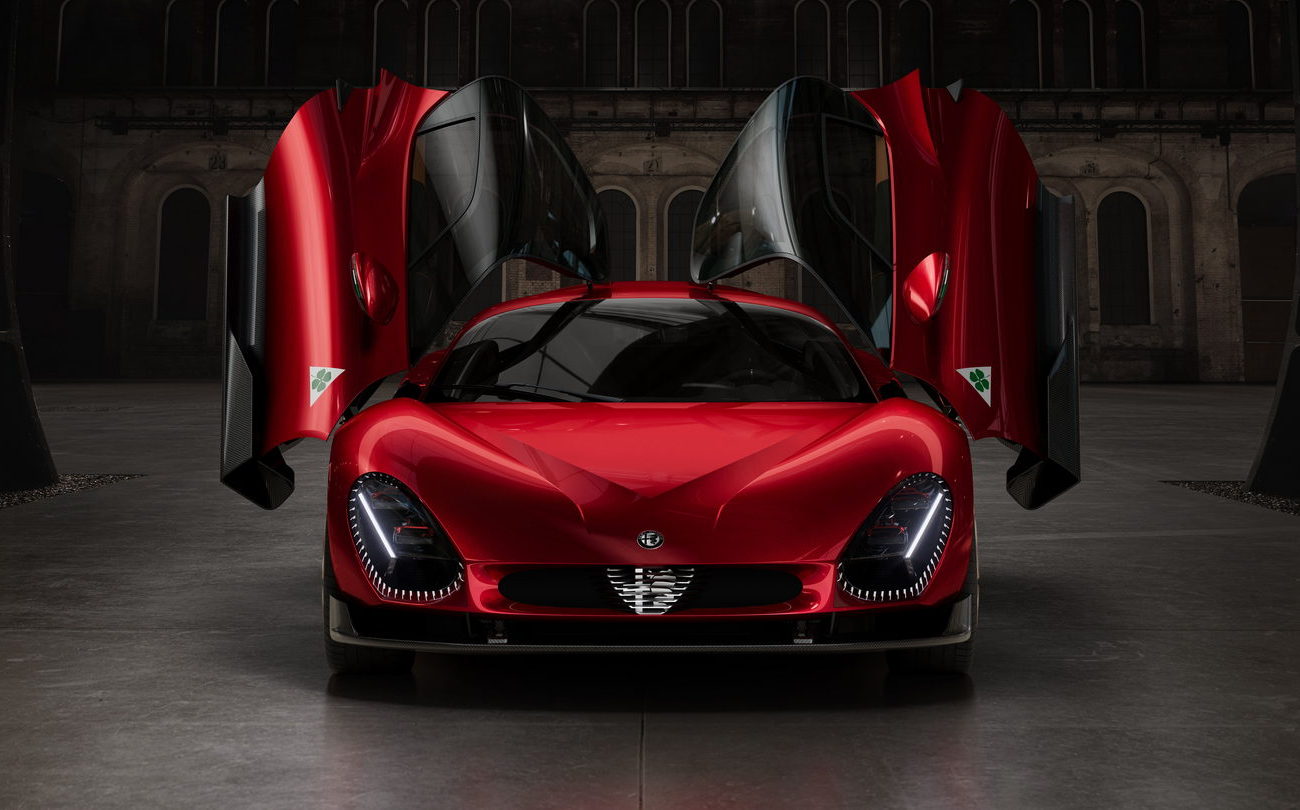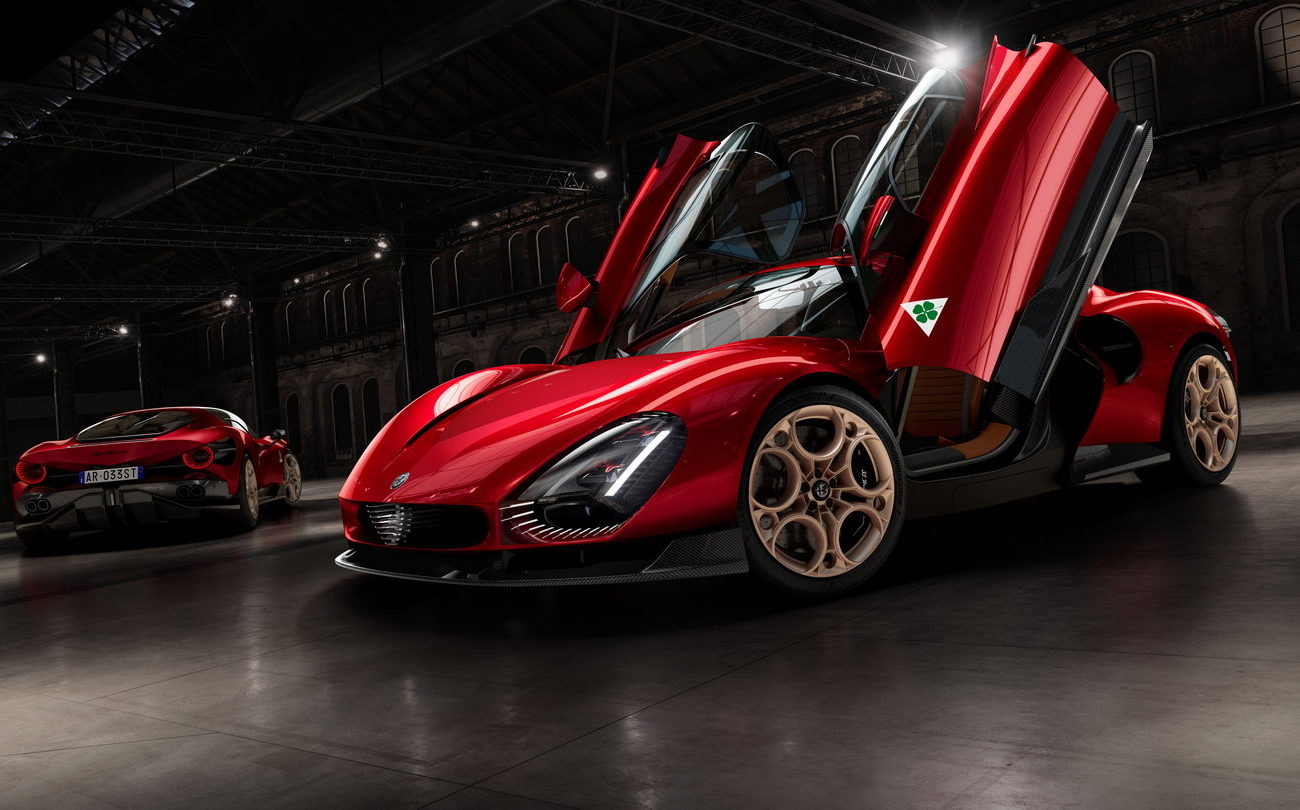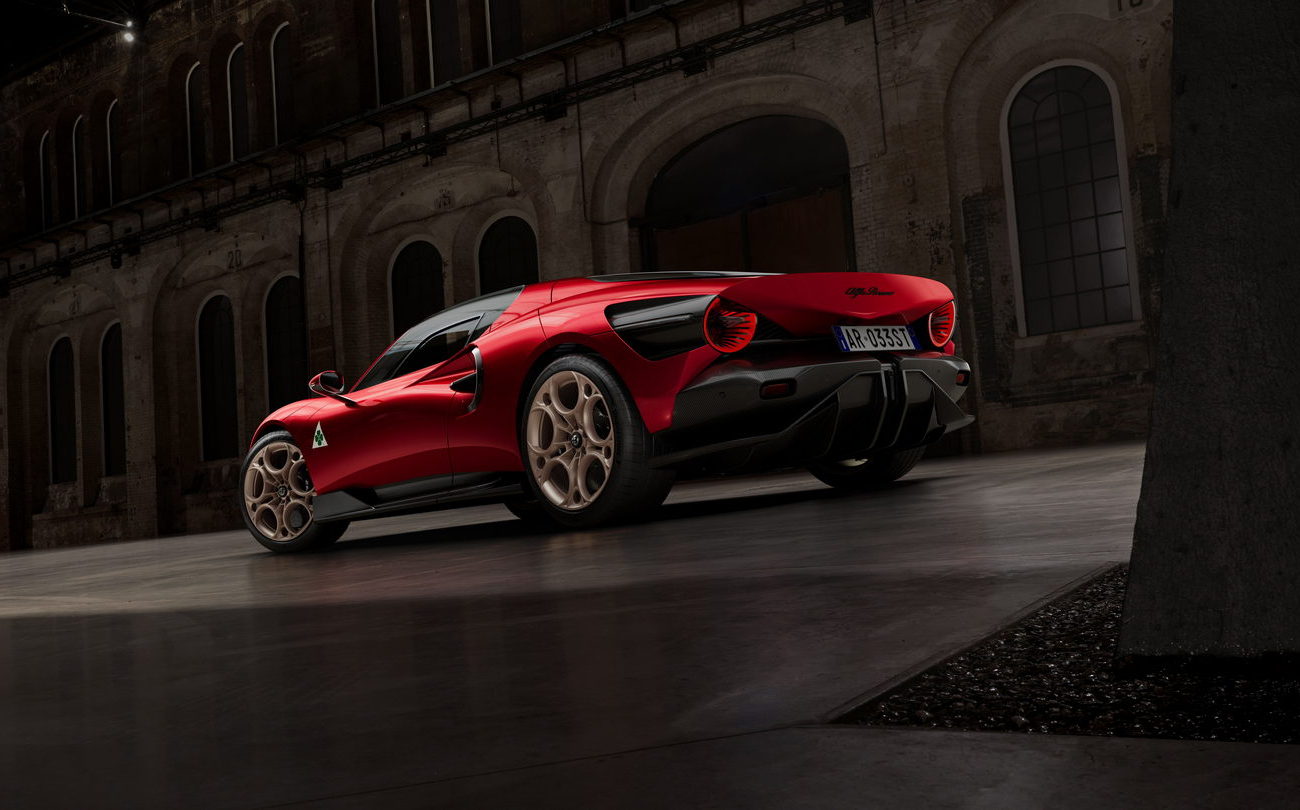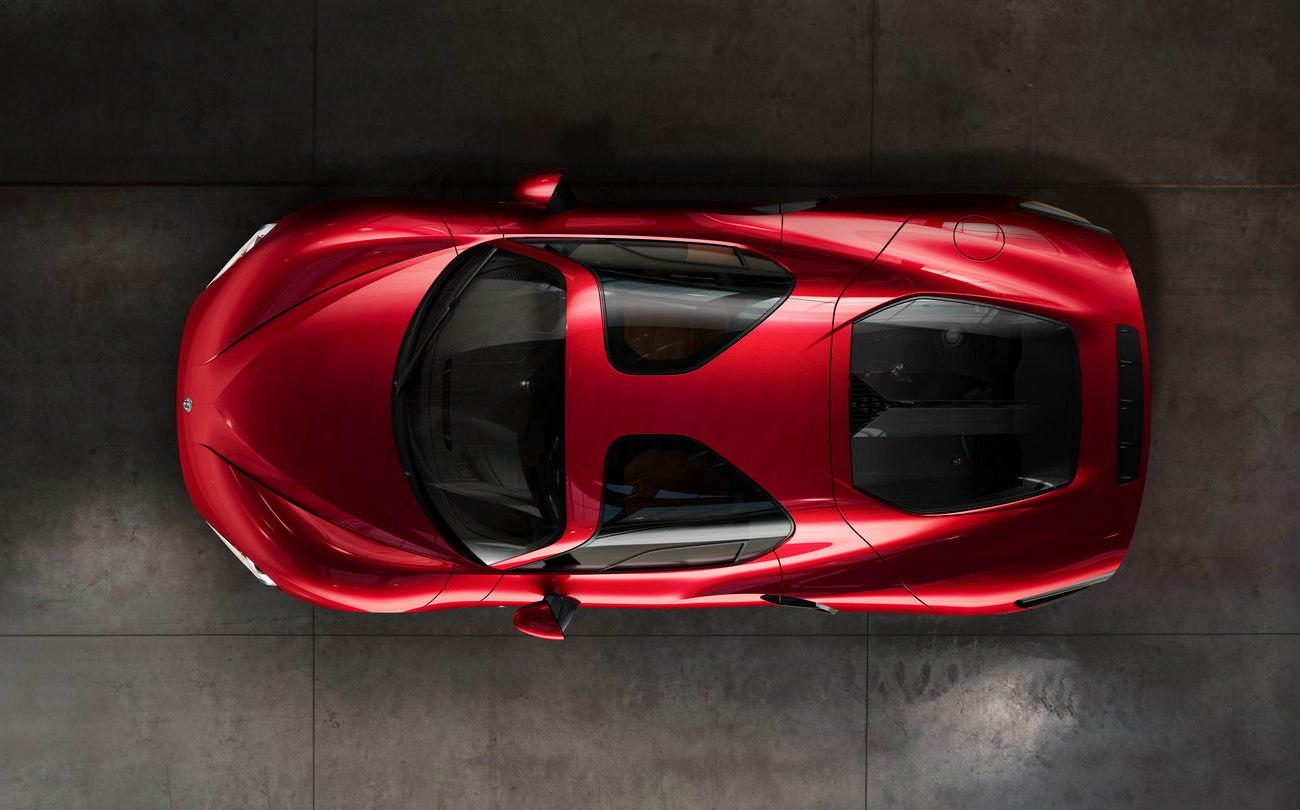Alfa Romeo 33 Stradale reborn as electric or V6-engined supercar for just 33 lucky collectors
Technically Alfa's first electric car
Alfa Romeo is poised to be a fully-electric car maker by 2027 and has taken its first step toward that by unveiling its first-ever EV, the new 33 Stradale. Named after the 1967 Tipo 33 — a racing car which later spawned a road-going version – the 33 Stradale will in fact be offered with either an electric powertrain or a petrol engine. Only 33 examples will be produced and every one of them is already spoken for. The estimated price is £2.6 million.
The electric version uses three electric motors (one front, two rear) developing up to 739bhp, and has enough battery capacity for Alfa to claim a 280-mile range on one charge. It can sprint to 62mph from rest in less than three seconds and has a top speed of 206mph.
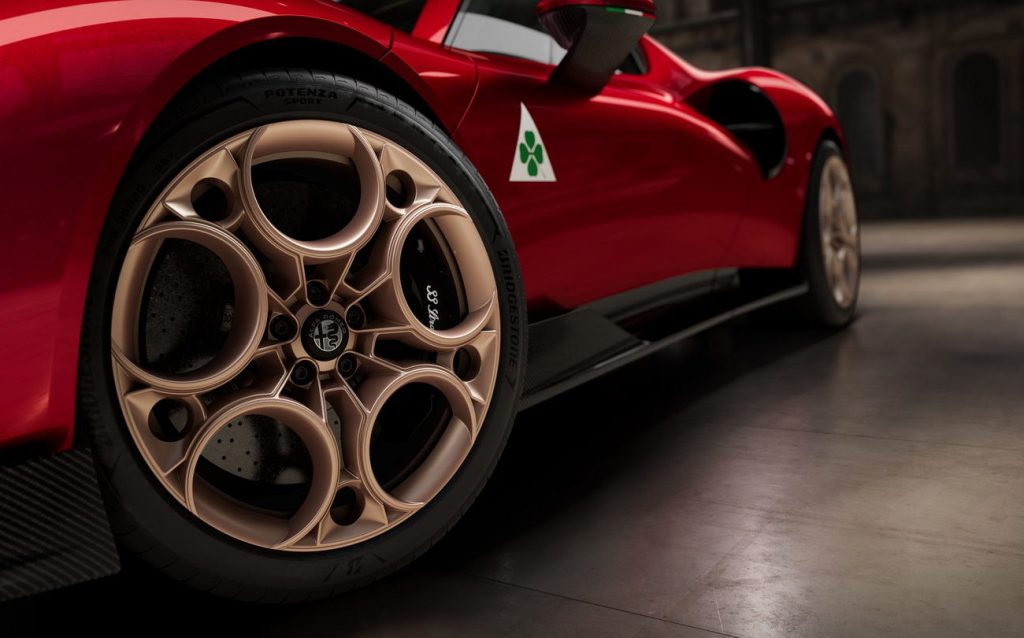
A swansong for Alfa’s sonorous V6?
A twin-turbocharged 2.9-litre V6 engine is the alternative option. It’s based on that found in the Giulia and Stelvio Quadrifoglio, but boosted to 611bhp, powering the rear wheels via an eight-speed dual-clutch paddle-shift gearbox. As it’s lighter, Alfa Romeo can quote the same performance figures as the electric version.
Regardless of what’s underneath, the styling of the 33 Stradale clearly references the original Tipo 33, and is a riot of curves and delicate little aero flicks. The new car has quite a high drag coefficient by modern standards — 0.37 — but that, says Alfa, is because it has been designed to generate downforce without needing massive, ugly wings.
The doors of the 33 Stradale, as on the original, flip up and forwards, while the windscreen and roof glass wrap around the passengers in the manner of an old fighter plane’s bubble canopy. There are multiple other retro references too, such as the ‘cofango’ triangle that forms the air vent-like shape on the bonnet.

High-tech construction
It may look inspired by the past, but the way the 33 Stradale is built is bang up to date. The core of the car is a carbon-fibre chassis built around a strong aluminium h-frame, while the bodywork is a mixture of aluminium and carbon-fibre, with a plexiglass rear screen — as in the original Tipo 33.
Underneath, the 33 Stradale has twin-arm suspension with electronically adjustable dampers. The front suspension can be lifted at the flick of a switch by 50mm to help ease the nose over speed humps or up long parking ramps. There is a sophisticated brake-by-wire system acting on massive carbon-ceramic discs, with six-piston monobloc calipers in aluminium up front and a four-piston system at the rear – all supplied by Brembo. Valtteri Bottas, one of Alfa Rome’s F1 drivers, is said to have been involved in the car’s testing and setup.
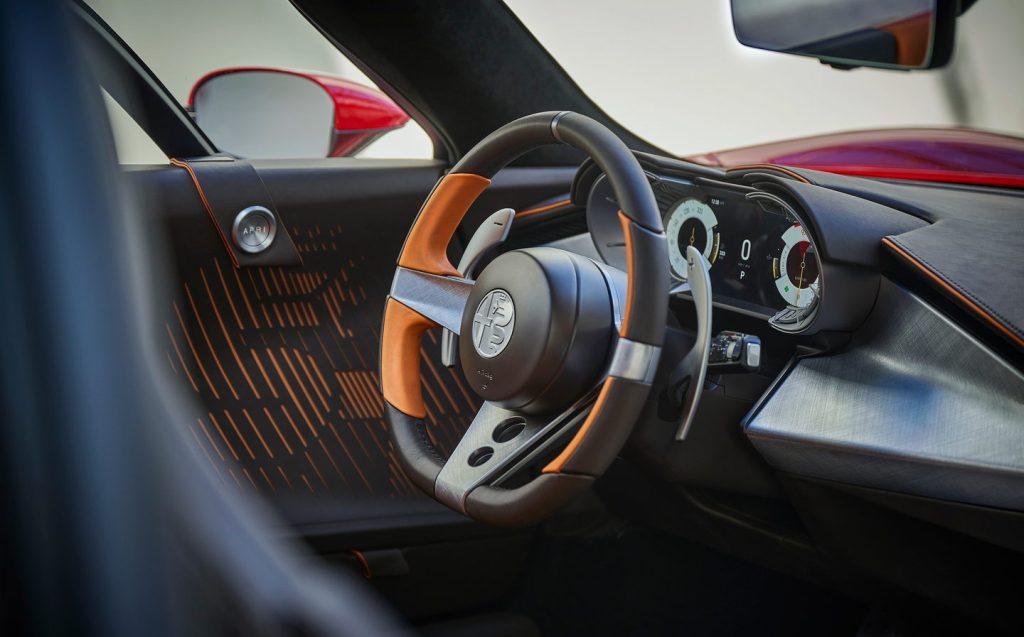
Inside, the cabin is stripped back to the essentials. Everything you see is covered in aluminium, carbon fibre or Alcantara. The buttons and the gearshift — the latter shaped to look like a jet plane’s throttle levers — are all solid metal. There’s no big central screen, either. The only digital presence in the cabin is the instrument panel, set deep into a binnacle Alfa refers to as its 3D telescopic layout. The steering wheel is kept free of buttons — McLaren style — so that the owner can focus on driving.
There are just two driving modes — Strada and Pista – both activated by a big metal switch on the centre console. There’s also a quadrifoglio (a four-leaf clover, Alfa’s racing symbol) in the centre of the console that activates the launch control mode when Pista is selected. More switches are arranged on the roof panel, continuing the aeronautical feel.
Buyers can choose from two interior trims. The Tributo looks more classical, while Alfa Corse is sportier and more contemporary. Either way, there are dramatic laid-back bucket seats with sixties-style leather ribbing.
Coach-built by Touring Superleggera
In keeping with the sixties theme, Alfa has commissioned one of the great Italian coachbuilders, Carrozzeria Touring Superleggera to build the 33 Stradale. Customers were first offered the chance to put down a deposit at last year’s Italian Grand Prix at Monza.
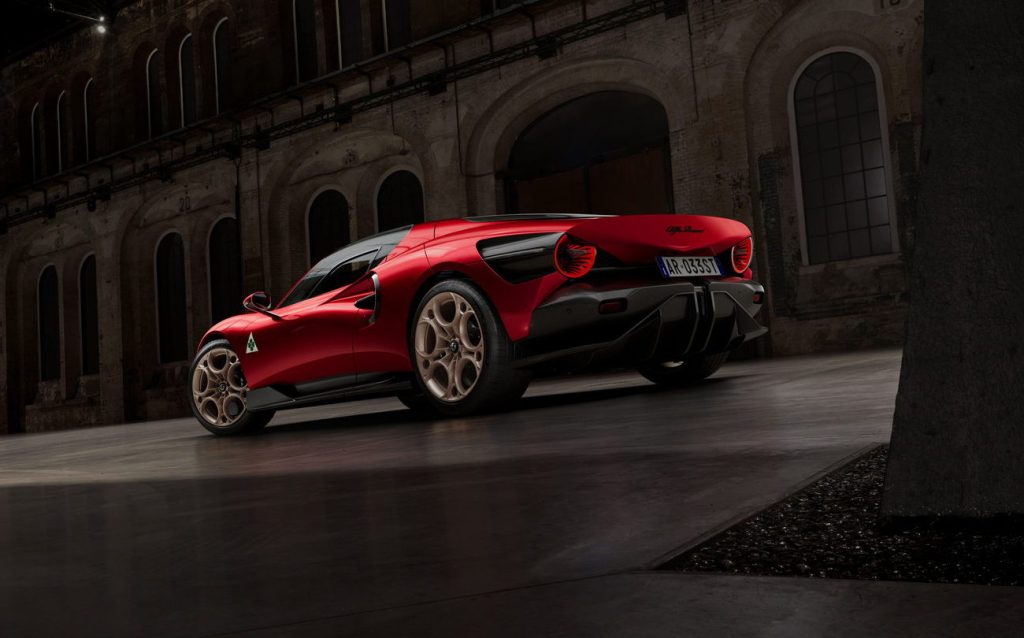
Alfa Romeo has also set up a special bespoke service — Alfa Romeo Bottega — which has already worked with all of the 33 Stradale’s buyers to create, effectively, 33 unique cars. The 33 Stradale won’t be the last car that Alfa Romeo Bottega works on, either.
At the car’s reveal, Alfa’s CEO — Jean-Philippe Imparato, formerly the head of Peugeot — said: “With the new 33 Stradale, we wanted to create something that lived up to our past, to serve the brand and to make the Alfisti fandom proud. Such a result could only have been achieved thanks to the expertise, hard work and passion of our team, with the support of management who have the clear ambition to contribute to writing chapters in the brand’s future, in full respect of its unique history. This is the brand’s first “fuoriserie” (custom-built) car since 1969, and I promise it won’t be the last.”
Alfa’s previous effort in this ultra-expensive, strictly-limited edition arena was the 8C Competizione, a V8-engined coupé and convertible based on the chassis of Maserati’s 4200GT. Only 829 of those were made, in spite of Alfa apparently receiving orders for more than double that figure.
Before that, Alfa worked with another great Italian styling house — Zagato — to create the 1989 SZ Coupé and a later RZ convertible version. This was based on the humble mechanicals of the Alfa Romeo 75 saloon, but has become a hugely desirable collector’s item since.
History of the original Tipo 33
Originally created as a race car in 1967, the Tipo 33 would go on to score victories in the Championship for Makes in 1975 and 1977 — the forerunner of the Sports Car World Championship and today’s World Endurance Championship.
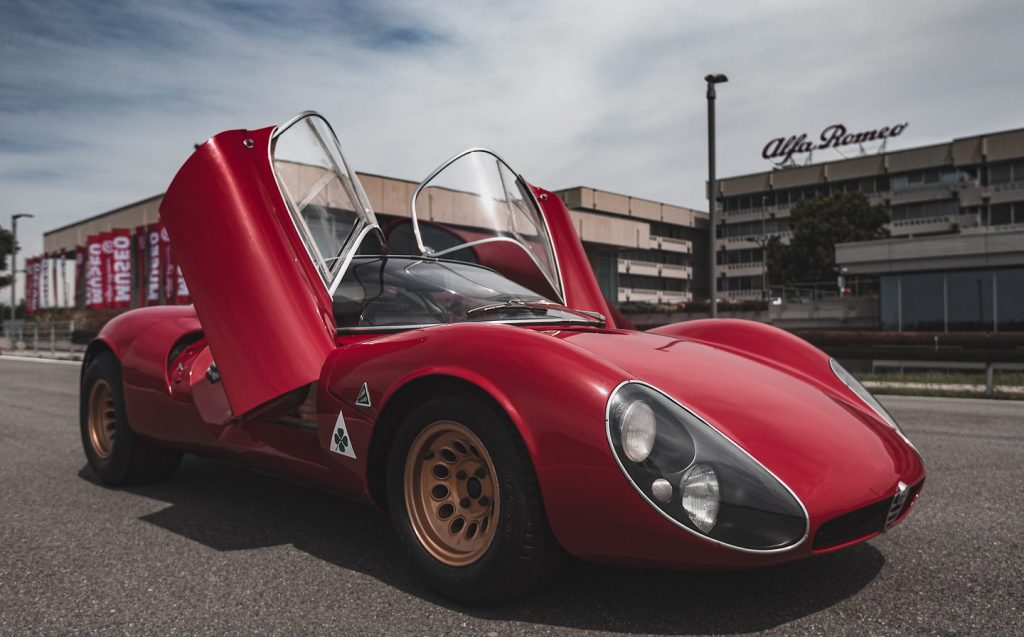
The Tipo 33 used a 2-litre V8 engine capable of 260bhp and the car weighed a mere 600kg. So successful was it as a race car, that Alfa decided to make a road-going version, and brought in the great designer Franco Scaglione, who worked with both Pininfarina and Bertone, to design it. The road-going car, the original 33 Stradale, used the same V8 engine, detuned to 230bhp but revving to 8,800rpm.
More expensive than a contemporary Ferrari, only 18 were built, but the original 33 Stradale is still considered one of the most beautiful cars ever built. Will the new one be so well remembered in half a century’s time?
Related articles
- If you enjoyed reading about the new Alfa Romeo 33 Stradale, you might like to read a profile of ‘Quadrifoglio’ — Alfa Romeo’s sporty sub-brand
- Clarkson: Alfa Romeo Stelvio Quadrifoglio is the SUV you should buy, but won’t
- Or read our review of the Alfa Romeo Tonale PHEV
Latest articles
- Should I buy a diesel car in 2025?
- F1 2025 calendar and race reports: The new Formula One season as it happens
- Zeekr 7X AWD 2025 review: A fast, spacious and high tech premium SUV — but someone call the chassis chief
- Denza Z9GT 2025 review: Flawed but sleek 1,062bhp shooting brake from BYD’s luxury arm
- Extended test: 2024 Renault Scenic E-Tech review
- Best-selling cars 2025: The UK’s ten most popular models of the year so far
- Audi A6 Avant 2025 review: Trusty executive estate ticks expected boxes, and there’s still a diesel option
- Keir Starmer eases pressure on carmakers to sell EVs in response to ‘global economic headwinds’
- Ferrari 12Cilindri Spider review: Heady blend of traditional and futuristic becomes even more intoxicating after lid is removed




